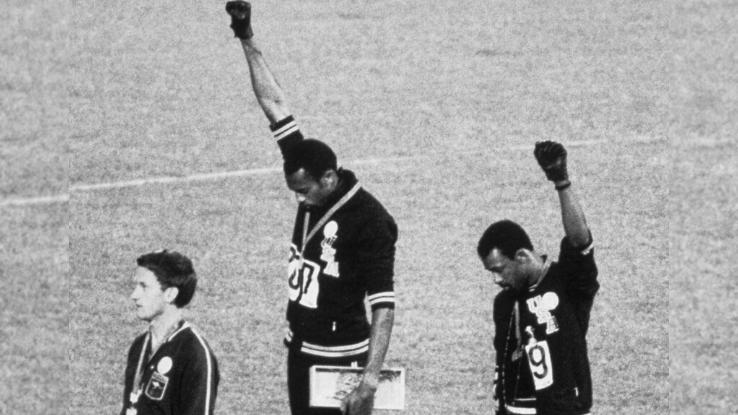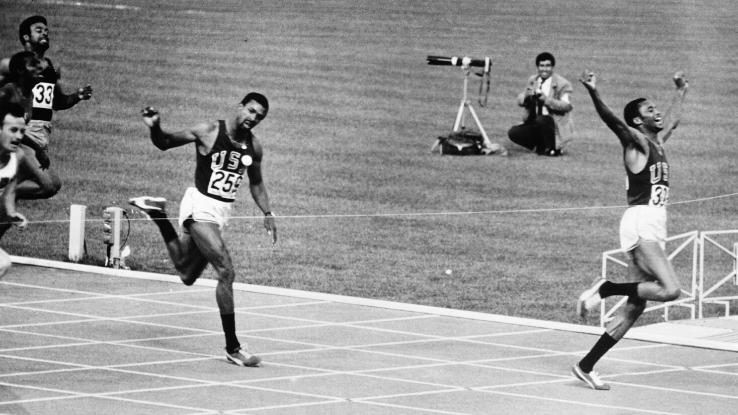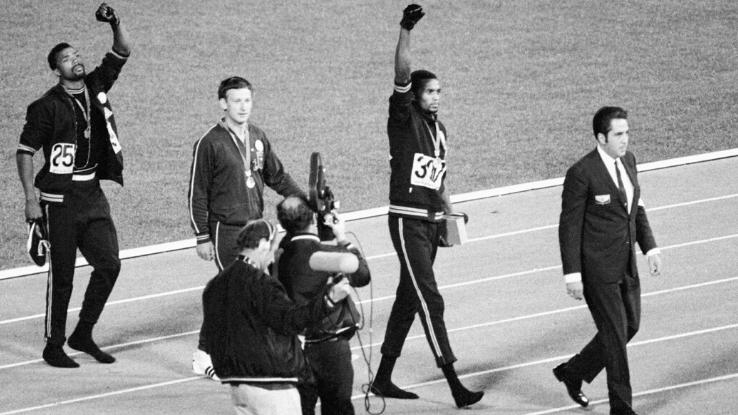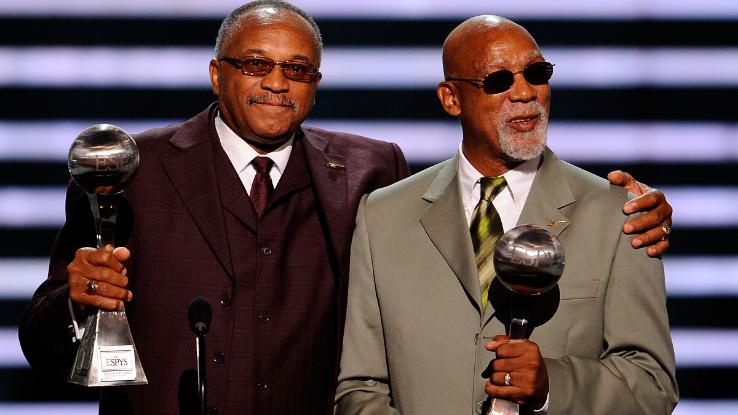“The Black Power Salute”: An Iconic Moment in Olympic History

The most memorable image from the 1968 Summer Olympics in Mexico City comes from the medal ceremony when Tommie Smith raised his right fist and John Carlos raised his left fist as the United States national anthem blasted through the stadium. This gesture, now known as the “Black Power Salute”, doubled as a profound act of protest against segregation and Jim Crow policies in America.
Some viewed Smith and Carlos’ gestures as controversial while others viewed them as inspirational. Ultimately, the story behind this monumental moment in Olympic history is extremely complex.
The Silent Protest
After winning the 200-meter dash, Tommie Smith and John Carlos stepped onto the Olympic medalist podium to receive their gold and bronze medals. It seemed like any other award ceremony — until they bowed their heads, donned black gloves, and raised their fists into the air. Their silent protest was a salute to Black Power and unity. It also represented the injustice and inequality that African Americans have experienced throughout history. The pair also wore black socks instead of shoes onto the podium, an act that was meant to draw attention to poverty in Black communities.

This iconic moment wasn’t planned at the last minute. In fact, it all started with Dr. Harry Edwards, a sociology professor at San Jose State University. Edwards, along with Carlos and Smith, founded the Olympic Project for Human Rights (OPHR) to protest racism and segregation in sports, the U.S. and the world. Smith, Carlos and other athletes worked with Edwards to use the Olympics as a stage to address the Civil Rights Movement in the U.S. Initially the OPHR called for a boycott of the 1968 Olympics, but when that didn’t happen, Smith and Carlos raised awareness in another way.
While some people found the protest brave, others were quick to criticize the demonstration.
The Eye-Opening Responses From Different Communities
The historic protest not only shocked the stadium’s audience, but it also shocked the world. The crowd was silent, briefly, before many audience members booed Smith and Carlos. The International Olympic Committee (IOC) also denounced the act, calling it “a deliberate and violent breach of the fundamental principles of the Olympic spirit.” Smith and Carlos were immediately escorted out of the arena and banned from the Olympic Village. The U.S. track team suspended both athletes, and the IOC destroyed their Olympic careers.

Back at home, the two men experienced endless abuse and even received death threats. However, Black communities in the U.S. had a different response; they celebrated the heroic protest. When Carlos returned to Washington, D.C., from Mexico City, a massive crowd of Howard University students welcomed him back home. Carlos was touched by their support. At the gathering, activist Stokely Carmichael declared, “From this day forward, Black people will pick their own Black heroes.”
Although Carlos and Smith lost their Olympic careers, they found their own success in the NFL and AFL and went on to coach track and field at different schools.
The Legacy That Lives On
Carlos and Smith made a long-lasting impact in the U.S. and around the world, becoming internationally recognized icons during the Equal Rights and Black Power movements. Although the two received staggering hate at the time, they knew they made the right move. “I feel as proud today as I did that day. I’m just so happy that so many people have woken up to it today,” Carlos said.

The Olympics eventually woke up as well. In 2019, Smith and Carlos were inducted into the U.S. Olympic & Paralympic Hall of Fame. Smith commented on the honor, saying, “It takes work for things to happen. It takes time. But usually not 51 years. I’ll take it now and accept it for the young man back in 1968.”
The 1968 Olympics Black Power Salute has been praised in multiple countries and honored with statues and murals. A statue of the historic protest is installed at the National Museum of African American History and Culture in Washington, D.C. There are also murals in West Oakland, California, and Sydney, Australia. Another statue lives in San Jose, where the idea of the demonstration was born. The statue displays Smith and Carlos raising their fists on the Olympic podium and invites those observing it to also “Take a Stand.”





